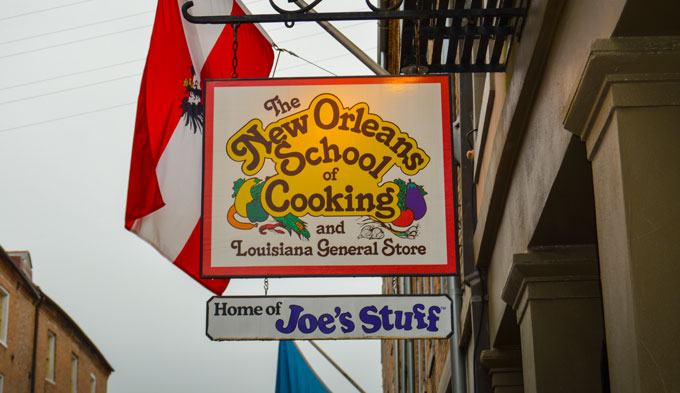
Southern cooking has a reputation throughout the United States for being delicious, unique, and indulgent, and New Orleans-style cooking is often considered the Big Daddy of all the southern cooking styles. I’d heard about New Orleans classics like Gumbo, Shrimp Creole, Beignets, and Jambalaya since I first became interested in cooking as a kid, but never really had a chance to taste them living outside of Louisiana. To me, it was a glaring gap in my culinary knowledge, to be honest. Through my life experiences travelling and living throughout the United States, I gained a lot of first-hand knowledge of other Southern cooking styles, but the cuisine of the Big Easy was my white whale. And I honestly asked myself: How could someone write about American regional cooking without having some experience in New Orleans-style cuisine? I mean, wouldn’t that writer be like, oh, I don’t know, a fraud?
Luckily, the people of New Orleans are very magnanimous; they’re quick to share what’s special about their cooking and culture with outsiders. For visitors and new arrivals who want to do more than taste New Orleans’ long list of well-known dishes, the city’s many cooking schools offer fun, informative, and entertaining courses teaching you how to prepare famous New Orleans dishes.
The New Orleans School of Cooking in the French Quarter on St. Louis Street is conveniently located and holds classes and demonstrations throughout the day so you can easily fit one into your sightseeing schedule. As my first step in learning the local cooking, I signed up for a demonstration at the school that would show how to prepare Crab and Corn Bisque, Shrimp Creole, Bananas Foster, and Pralines. To the uninitiated, a New Orleans praline is a confection made with cooked sugar, butter, cream (or buttermilk or evaporated milk), and pecans.
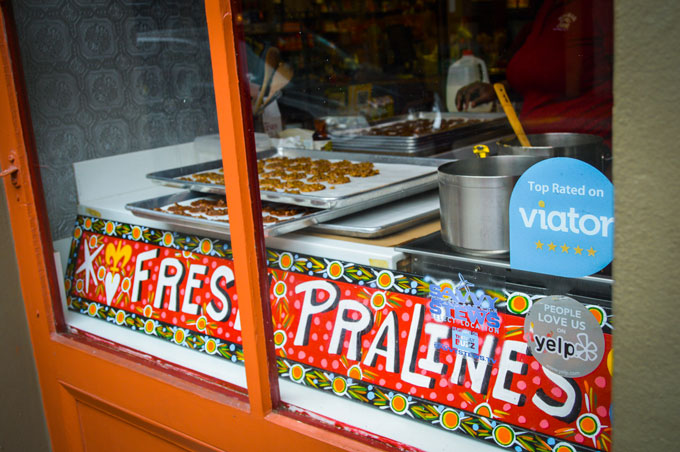
Arriving at the school, I was charmed by the welcoming atmosphere of the cozy store that makes up the front room of the school, especially since that morning was gray and rainy. From outside the school, you can see the store’s praline-making section where they prepare the city’s famous candy and I was able to sample the candy for the first time after entering the shop. Although the glossy exterior might make you think a praline has a hard texture, it’s actually soft and melts in your mouth. The pralines I sampled were the traditional style, with a slightly crumbly texture. There’s also a creamy style that has a little bit more chewiness to it.
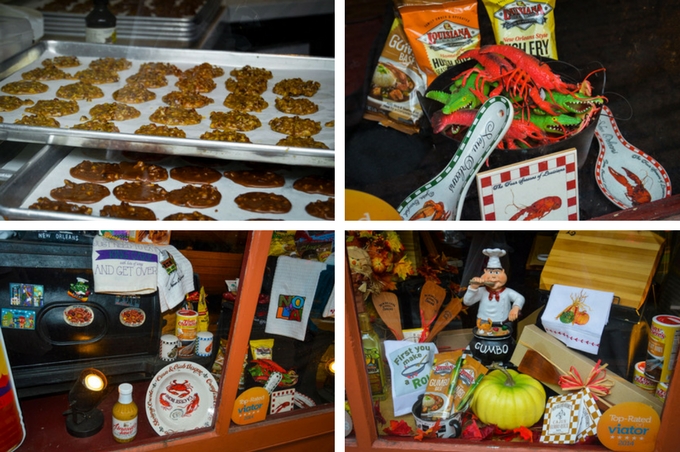
Other than the praline station, the store also offers all the things you’d need to excel in creating New Orleans cuisine: spice blends and hot peppers sauces galore, filé powder to add to gumbo and make it really authentic, cookbooks, utensils and more. I, of course, had no intention of buying anything when I arrived but ended up leaving with fun bags of goodies for my kitchen and gifts for friends and family. There was a deck of playing cards that had New Orleans Creole and Cajun recipes printed on the back of each card with instructions to make dishes like Crawfish Étoufée, Smothered Alligator, Southern Biscuits, and Crab au Gratin. And I added to my growing collection of cookie cutters with new cutters shaped like alligators, crawfish, pelicans, the Mardi Gras crown, and a Voodoo doll.
The demo that I attended was in a large room behind the store on the first floor while the hands-on classes were held in a kitchen upstairs. Each table in the demo room had pitchers of cold sweet tea, baskets of freshly baked biscuits, and jars of sugar cane syrup in the centers of the tables. Our instructor, an experienced native New Orleans cook who told the funniest stories about the cooking battles she waged with her equally experienced mother-in-law, said that a traditional way of eating biscuits in the morning was drizzling them with the sugar cane syrup. The combination was sinfully delicious.
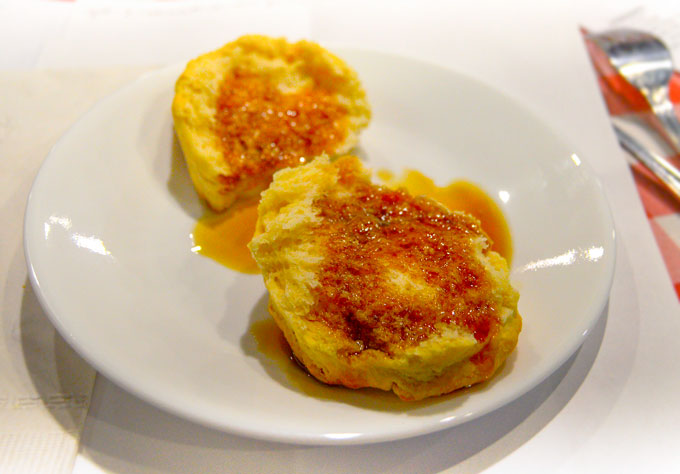
Looking at the mirror posed above the stove, we could see everything our instructor was doing as she told us detailed instructions on how the prepare the day’s dishes. We were also given recipes to take home with us. First up on the menu was the Crab and Corn Bisque, a lightly seasoned cream soup that allowed the sweetness of the crab and corn to shine.
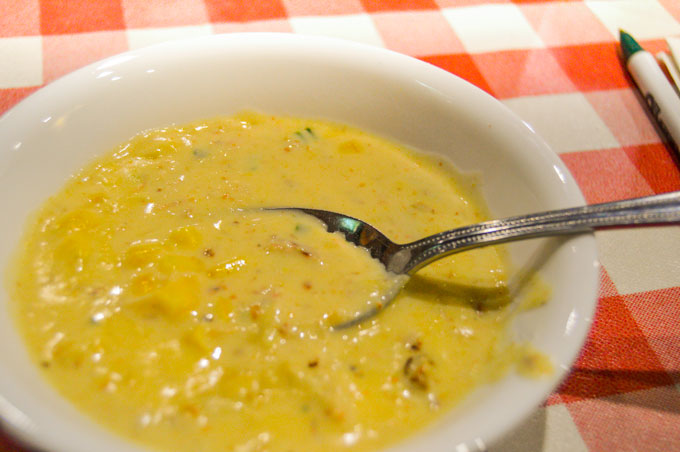
For the entree, we were shown how to make Shrimp Creole, which consists of sauteed shrimp, the New Orleans Holy Trinity of onions, celery, and bell pepper, tomatoes, and Cajun seasonings served over rice.
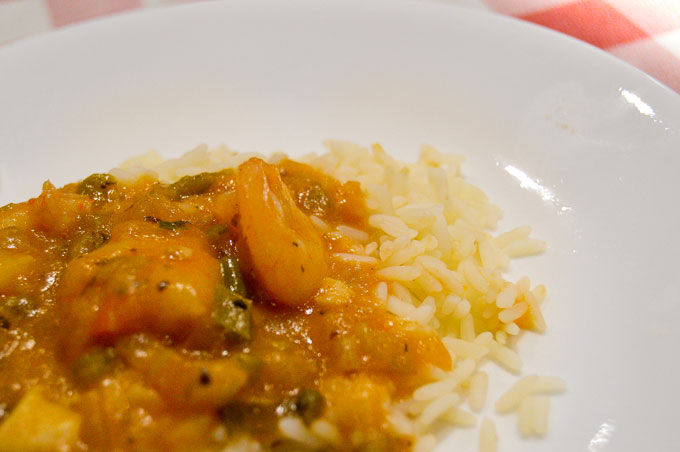
As a bonus, the instructor showed us how to make pralines before moving on to creating Bananas Foster for dessert. Bananas Foster was first served at Brennan’s Restaurant in the 1950s and has become a dessert staple in New Orleans because of its delicious taste and dramatic presentation. It is made by cooking bananas lightly in a sauce of butter and brown sugar before rum and banana liqueur are added and flambéed. The banana and rum sauce are then poured over vanilla ice cream to serve.
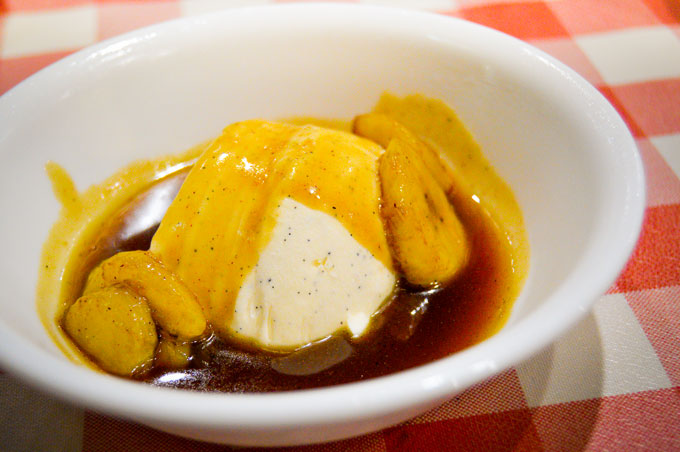
After the demonstration, our gracious and humorous instructor answered questions from students while I debated whether I should buy even more goodies from the store. I do regret that I didn’t purchase any filé powder because it is not easy to find outside of Louisiana and my sister seemed mildly disappointed that I bought no hush puppy mix when she saw the packages shown in the pictures above. Guess I’ll have to make another trip to the store and take some more classes…
As a note to tourists debating whether they should take a class: After finishing the meal, I was surprised that I didn’t feel TOO stuffed and was ready to follow the rather ambitious photography plan I devised for the rest of the day throughout the French Quarter. So if you’re worried that watching a cooking demo and eating a three-course Big Easy meal might slow down your sightseeing, I don’t think it would be an issue at all. Laissez les bon temps roulez!
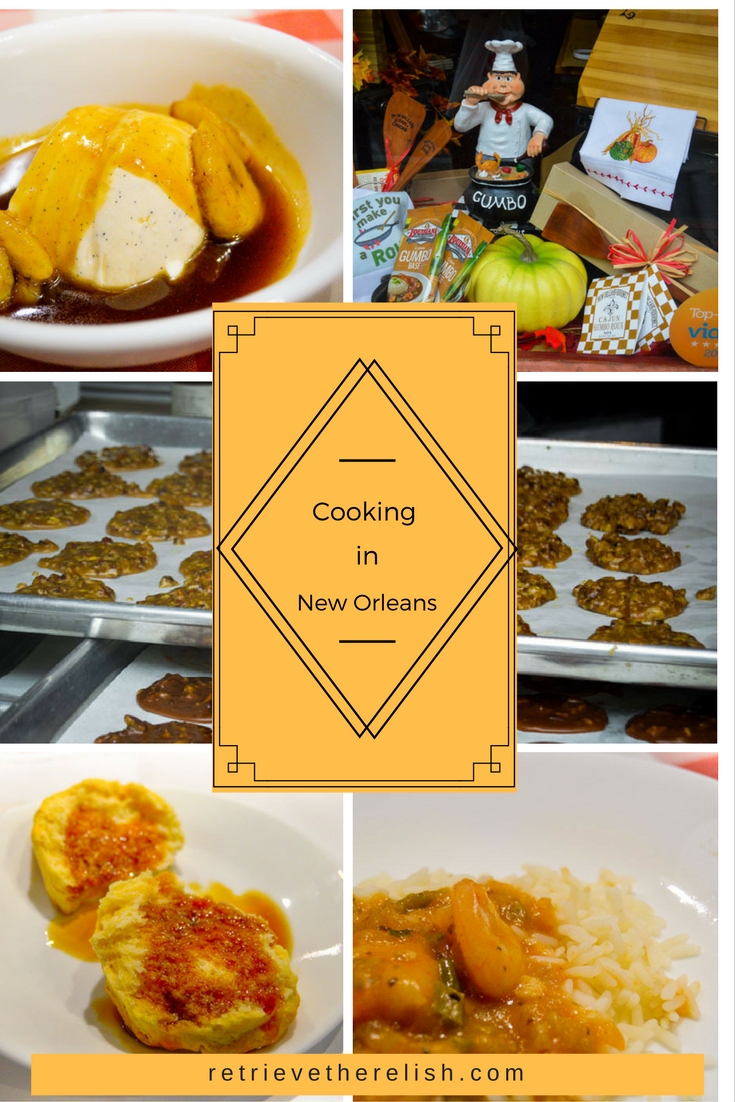
Leave a Reply